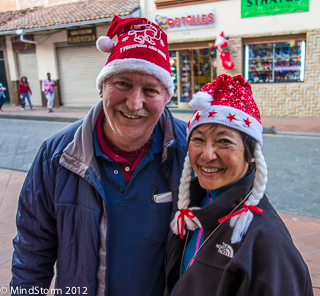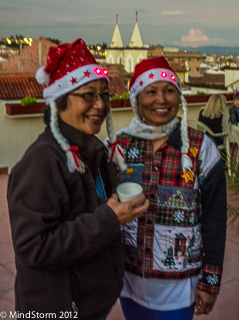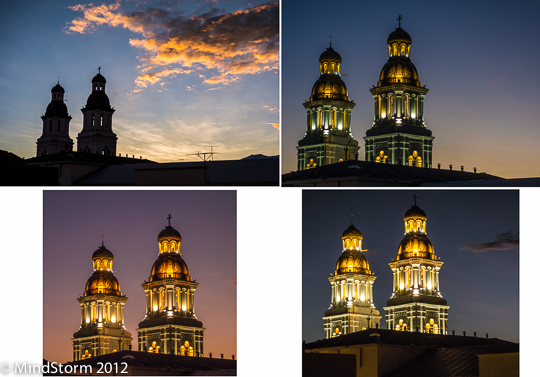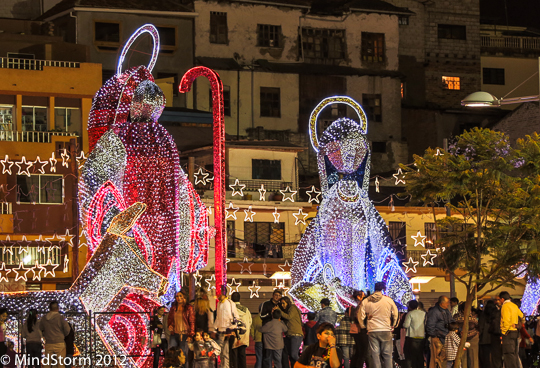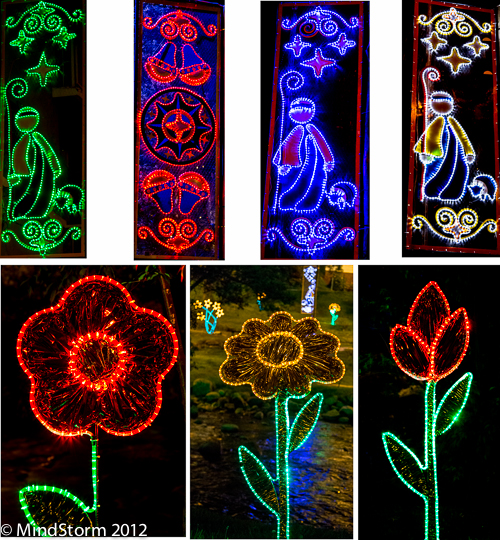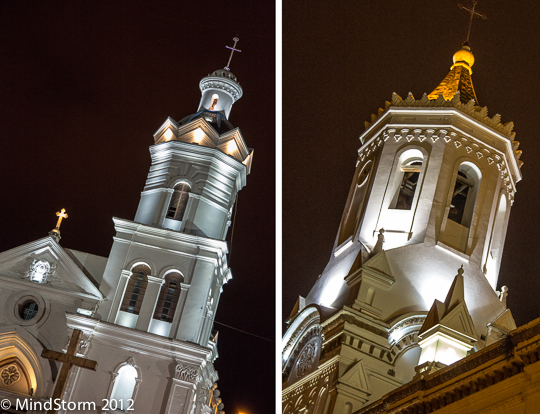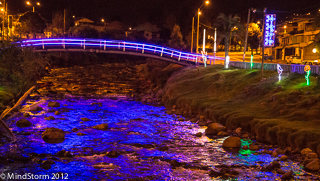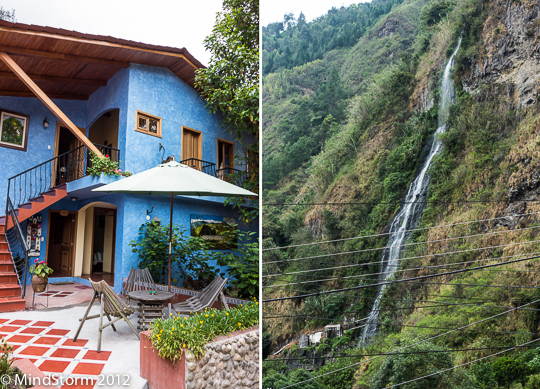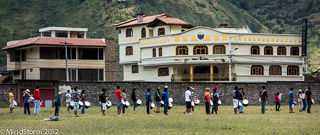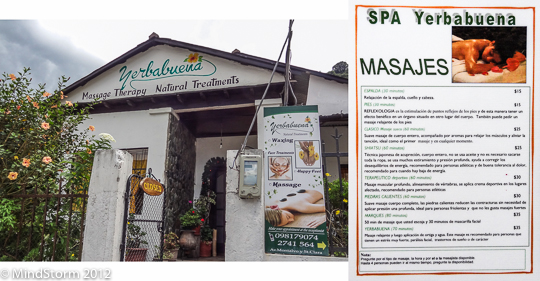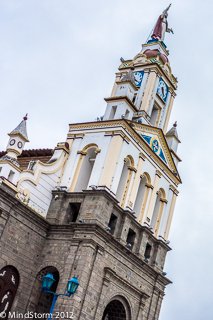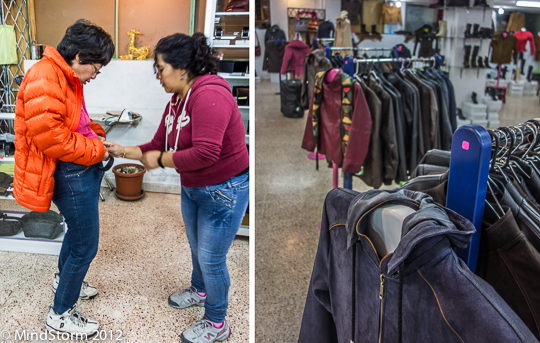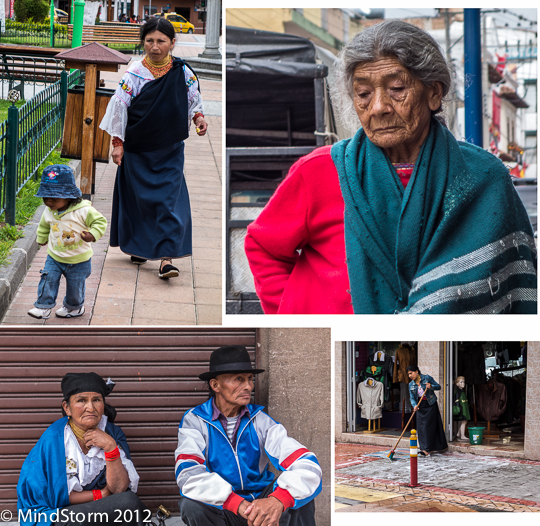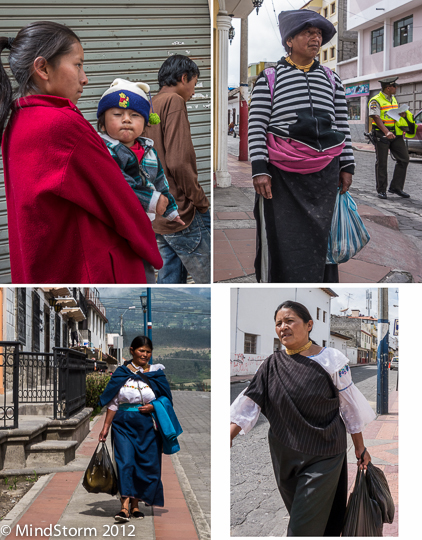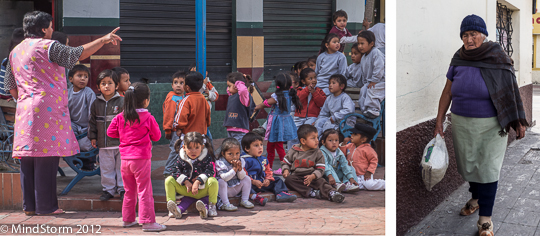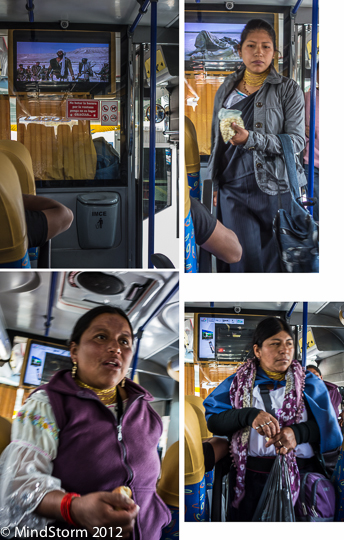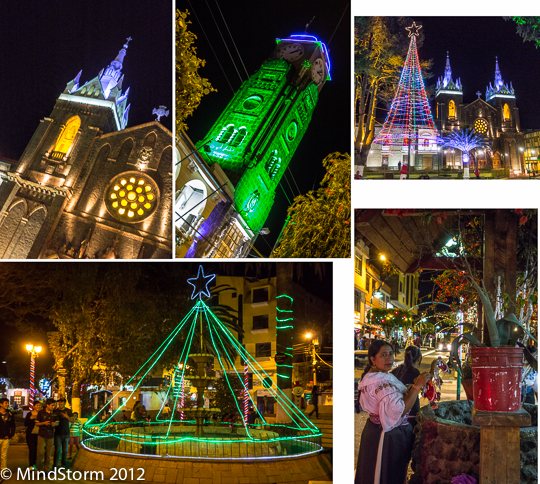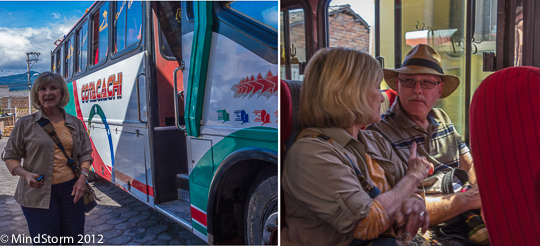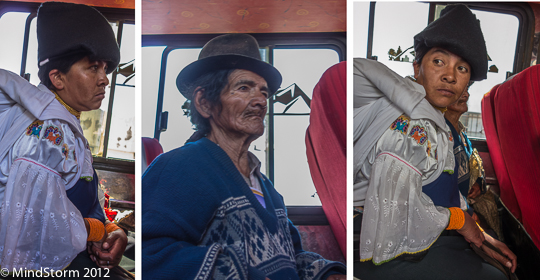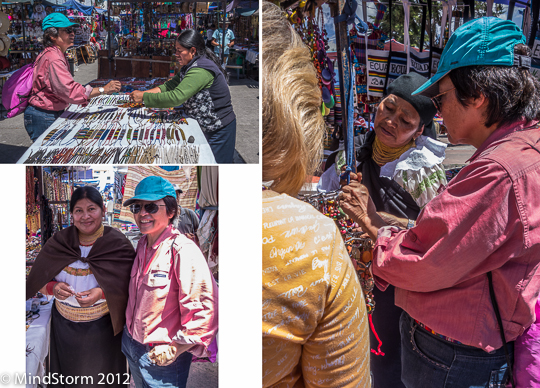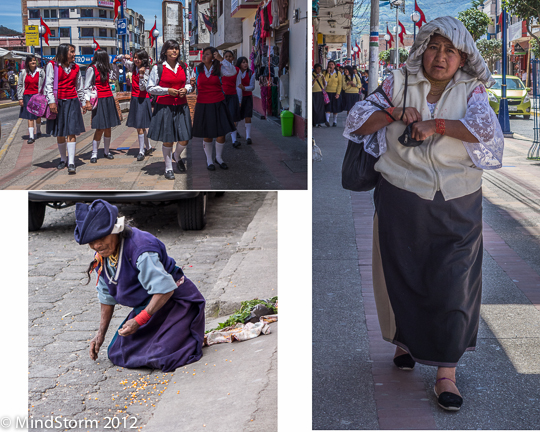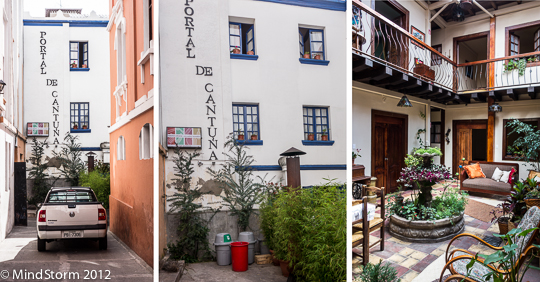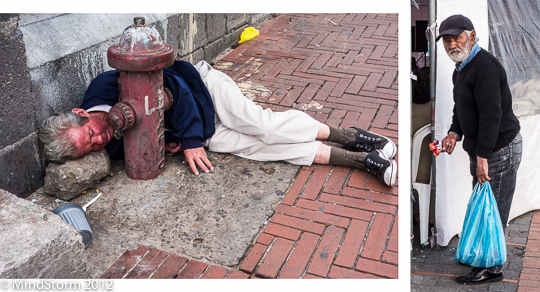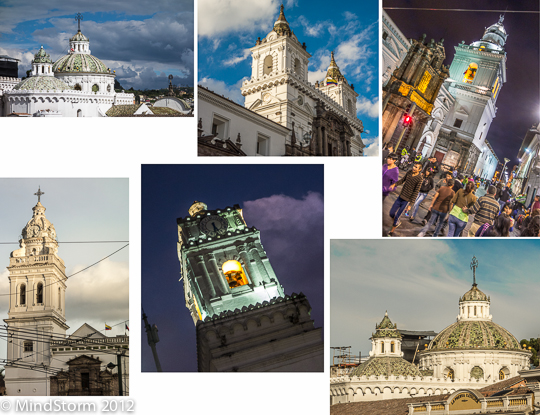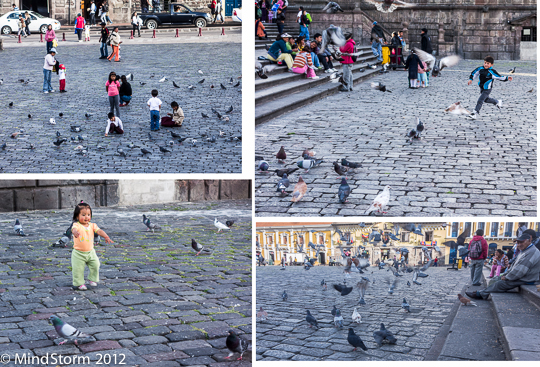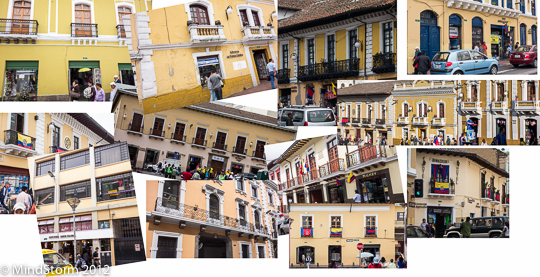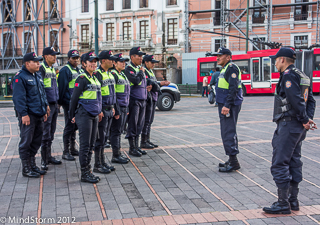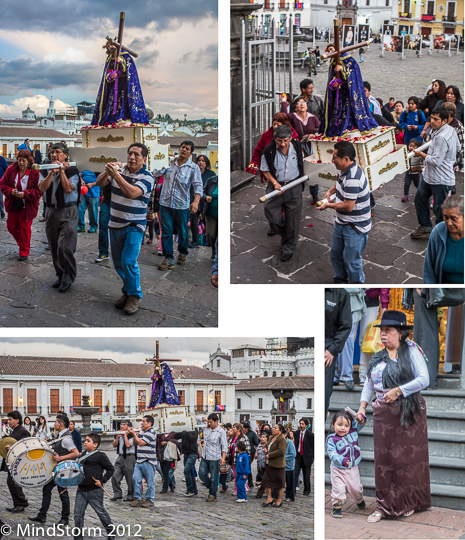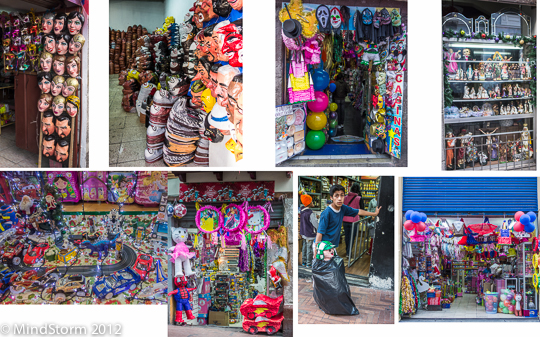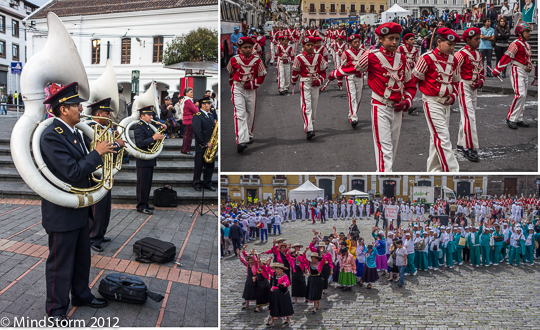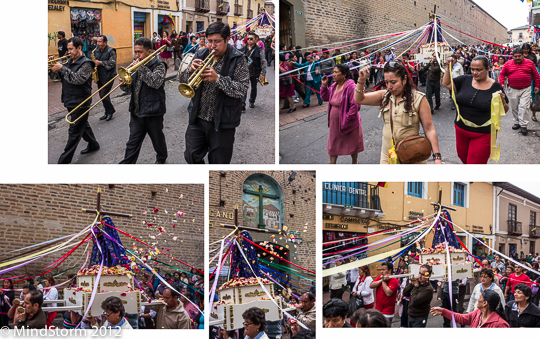The weather is dreary today, and after a week of travel, we are just staying inside. Figured it might be time for the third installment of random thoughts about Cuenca, and about Ecuador in general.
Bus System: The bus system throughout Ecuador is cheap, efficient, and heavily utilized. You can travel within any city for 25 cents, and can cross the entire country for about $7. Within town, the buses run every 5-6 minutes. When we took a long chain of buses to cross the country, we never had to wait more than 10 minutes to catch the next bus once we were dropped off from the prior one. The buses are almost always more than 50% full, and frequently 90%, yet it is rare for anyone to have to stand. Coming from California, I continue to be amazed by how well it works.
Poverty and Kids: Cuenca is the most prosperous city per capita in Ecuador, but there are many people here living on $5 per day. As you go out into smaller communities, it is clear that many (perhaps most) people live with less than almost anyone in America. Children are everywhere, and watching the interaction between the kids and parents, it is obvious they are loved. Despite the poverty, children here are universally well clothed, well fed, and clean (well, as clean as any kid playing outside can ever be…). I have never seen a parent here be impatient with a child, as is often witnessed back in America. Perhaps even more surprising, kids here are curious and active, but I have never seen one really misbehave in public. (Yes, babies cry, but not for long, as their mothers respond by comforting them.)
Car Horns Only in Cuenca: I have mentioned before that drivers honk their horns milliseconds after a light changes, or anytime the traffic is not moving as fast as they would like. This is despite the obvious fact that the horn will have no effect on the traffic. Surprisingly, this seems only true in Cuenca though. I almost never heard a horn in Salinas, Puerto Lopez, Quito, Cotacachi, or Bano.
Free College: The current president has made a lot of changes that have helped improve the lives of Ecuadorians. One such change was the elimination of tuition for college in 2010. Students must pass a competitive exam to attend university. A score of 650 earns free tuition for any field. 800 is needed for free tuition to medical school. We have been told that students who obtain a score of 1000 are given free tuition to a university in America, in exchange for an equal number of years working in under-served areas in Ecuador upon graduation.
Sweet Tooth: I have stated before that I was surprised to see how overweight many Ecuadorians are. Though the extreme obesity of America is rare here, a large part of the population is jiggling down the street. One reason seems to be their universal sweet tooth. The number of ice cream shops and pastry shops is astonishing. Downtown there is one or more on almost every block. The local Coral grocery store has 5 full isles devoted solely to packaged candy, plus another 150 sq ft area for bulk candy. People here also drink a lot of sugared drinks. Diet drinks (or “Light” as they are called here) are hard to find, and cost 50 cents extra if you want one with lunch.
Sidewalks: The sidewalks here are very uneven, and have numerous tripping hazards. It is common to have small pipes cut off a few inches above the ground — apparently left over from a prior use and not cleanly removed. There are heavy support cables embedded in the concrete in some areas, left over from when a telephone pole must have been there before. When walking, always look down, or risk a face-plant. Definitely not a good place for a blind person — I’ve only seen two people with white canes, and both were holding the arm of a sighted person to guide them through the obstacle course.
Language: There are enough expats living in Cuenca that you can have comfortable conversations in English. However, enter any store, or leave Cuenca, and Spanish is pretty much the only language spoken. There are expats that have been here for years and speak no Spanish, but they are missing out in many ways. Our Spanish is very rudimentary — probably about equal to a 3 year old child. If we decide to move here long term, we will definitely need to improve our Spanish skills. I have always considered those that came to live in America and speak no English after years to be second-class people. I don’t want to be that person in reverse when living here…
Learning Spanish: We have a series of 80 Pimsleur lessons, but neither of us has been very good at using them. I find myself looking at the clock after 10 minutes and wondering how I will last the full 30 minute lesson. Not good… We both had tutors for awhile from Simon Bolivar school here. Neither of our instructors were very good — the best instructors were already committed. Yet I found my language skill definitely did improve in the short time I was there. If we decide to come back and live here, it looks like having a tutor will be the fastest way to achieve modest fluency.
Plaza Otorongo: This is a plaza a couple blocks from our apartment. They have various shows and displays there most weekends, and often during the week. These all use the same type of tents you would see at a street art fair in America. The odd thing is we see the tents going up in the morning, a show often lasts just a single day, then the tents are all taken down… to be put back up the next day for a different show. It sure seems to me that it would be more efficient for the shows to coordinate and use the same tents rather than spend all that time and cost of setting up and tearing down each time…
Home?: We have been here for six weeks, with another four until we return to California. When I talk about “going home” now, I mean “back to our apartment in Cuenca” more often that I mean “back to Berkeley.” Amazing how fast we can adapt to new situations and environments… 🙂


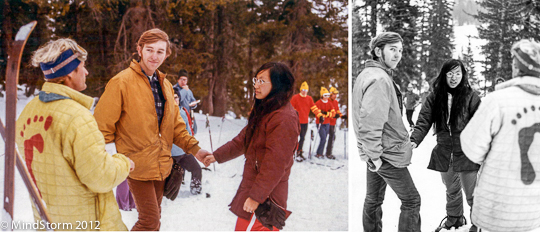
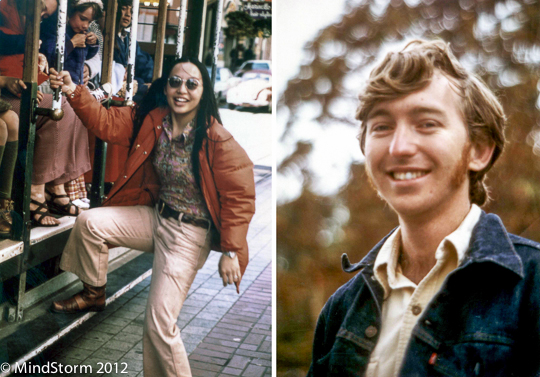 Photos we took of each other right around the time of our marriage.
Photos we took of each other right around the time of our marriage.


